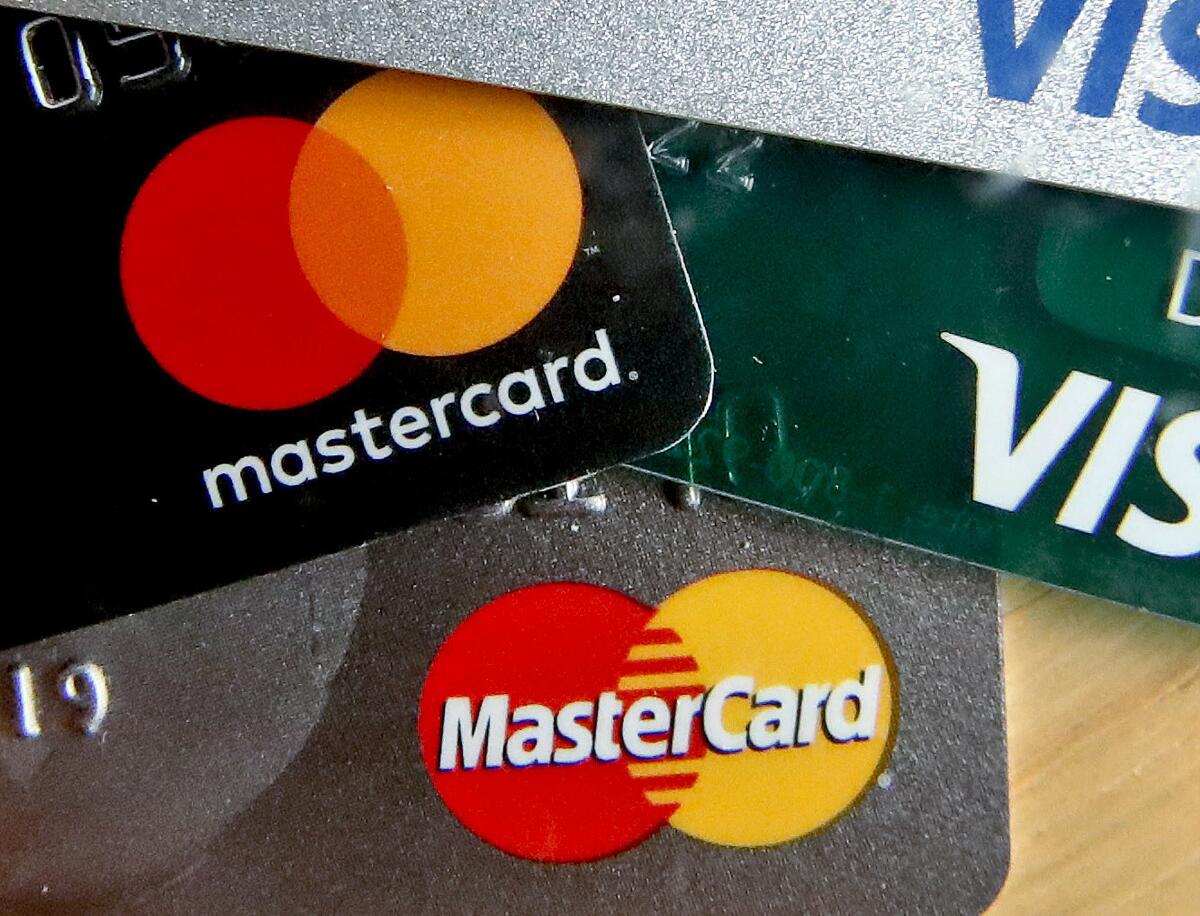Beware: Credit card debt doesn’t disappear when you die

- Share via
Dear Liz: I am an 80-year-old female in generally good health. My only family is my unmarried 54-year-old son. The only debt I have is credit card debt of about $30,000 at 0% interest. It’s in my name alone. My house and car have been registered with “transfer on death” designations. My son’s name is on my modest checking account. When I die, is there a legal situation where he would be required to pay the credit card debt? There will be no probate.
Answer: Credit card debt doesn’t just disappear when you die. The debt would become the responsibility of your estate. Transfer-on-death options avoid probate, the court process that otherwise follows death, but creditors can still go after the property that’s been transferred.
Depending on state law, creditors may have longer to make their claims than if your estate had gone through probate or if you had used a living trust, says Jennifer Sawday, an estate planning attorney in Long Beach.
That’s among the reasons why transfer-on-death designations may not be the best solution. Consider making an appointment with an estate planning attorney to discuss your situation and possible alternatives.
Also, your 0% interest rate is temporary. Once the current teaser rate ends, you’ll likely pay a much higher interest rate and your monthly payments could jump. If you can pay off this debt, that’s probably the best course. If you can’t, you may want to discuss your situation with a bankruptcy attorney.
Dear Liz: I believe you provided bad information to the woman inquiring about Social Security spousal benefits for her husband.
You suggested to her that since she was the higher income spouse, that she wait until age 70 to maximize the benefit her husband could receive. I used to think that was the case as well, and was planning my Social Security start date accordingly.
However, a few months ago I found out that this is not true. The maximum spousal support is based on the full retirement age of the spouse or deceased spouse, not the maximum amount received if the deceased spouse waits longer to take Social Security. This is true for both spousal benefits when the higher wage earner is alive and for survivor benefits. After finding this information out, I filed to start receiving immediately, since I’m at my full retirement age.
Answer: Many people confuse the rules for spousal and survivor benefits, as you’ve done. This is why it can be so important to discuss your claiming strategy with an expert before you make a decision that stunts the survivor’s future income.
Spousal benefits are available when the higher earner is still alive. Spousal benefits can be up to 50% of the higher earner’s benefit at full retirement age. Spousal benefits don’t get bigger if the higher earner delays filing beyond his or her full retirement age, and they don’t shrink if the higher earner applies before full retirement age. (If the spouse applies before his or her own retirement age, however, the spousal benefit typically will be reduced because of the early start.)
Survivor benefits are a different story. These are the benefits that kick in once the higher earner has died. Survivor benefits are up to 100% of what the higher earner was actually receiving. In other words, survivor benefits can be stunted if the higher earner starts a retirement benefit early and will get bigger if the higher earner delays applying.
This is why financial advisors often recommend the higher earner wait to file until their benefit maxes out at age 70. Not only is the higher earner likely to maximize their lifetime benefit by waiting, but the delay also increases the checks the survivor will receive.
If you regret your decision to start benefits, you could opt to suspend your application. You wouldn’t get back the delayed retirement credits you lost after starting your benefit, but those credits would be applied going forward so your benefit amount could continue to grow.
Another option, if it’s been less than 12 months since you applied, is to withdraw your application. This would require paying back all the benefits you’ve received so far, but it would reset the clock so that you could earn all the delayed retirement credits you missed.
Liz Weston, Certified Financial Planner®, is a personal finance columnist. Questions may be sent to her at 3940 Laurel Canyon, No. 238, Studio City, CA 91604, or by using the “Contact” form at asklizweston.com.
More to Read
Inside the business of entertainment
The Wide Shot brings you news, analysis and insights on everything from streaming wars to production — and what it all means for the future.
You may occasionally receive promotional content from the Los Angeles Times.










